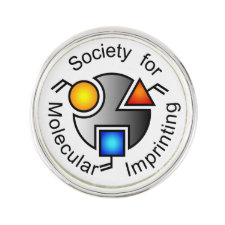
Authors: Faizal CKM, Kobayashi T
Article Title: Molecularly Imprinted Membrane Applied for Selective Separation.
Publication date: 2011
Journal: Journal of Applied Sciences
Volume: 11
Issue: (13)
Page numbers: 2411-2415.
DOI: 10.3923/jas.2011.2411.2415
Alternative URL: https://www.researchgate.net/publication/252606921_Molecularly_Imprinted_Membrane_Applied_for_Selective_Separation
Abstract: Molecular Imprinting Polymer (MIP) technique is well known for creating polymer materials with molecule selectivity in adsorption and separation. MIPs have mostly been prepared by bulk polymerization and grinding the resulting brittle polymer to prepare particles of the desired dimensions. However, this technique also suffered some backdrops such as limitation in its application due to powder shape and limitation in binding ability. To circumvent these problems, we had extended such technique on formation of membrane adsorbents using phase inversion imprinting technique. Namely, copolymerization of a template-containing monomers with commercial scaffold monomer was achieved such membranes in order to selectively separate the target molecules. One main feature of this system is the imprinted polymer forming film which is possible to be use as filtration materials for selective separation. In the present study, we prepared the imprinted membranes by copolymerization of covalently linked tocopherol methacrylate (α-TMA) monomer and acrylonitrile (AN) followed by phase inversion in water non-solvent for membrane formation. Herein, the evidence included advantage in phase inversion covalently imprinting technique in their binding natures to tocopherol (Toc) and phenol derivatives and was studied on basis of selectivity of the imprinted membrane. Scatchard analysis indicated that the imprinted membranes exhibited high affinity and good selective binding of α-Toc relative to its analogs, δ-Toc and 4-chromanol (4-Chr). Results of permeation of Tocs and phenol mixture showed that the imprinted membranes were achieved higher separation factor of α-Toc and 4-Chr as compared to the non-imprinted membrane. This indicated that the covalent imprinting of α-Toc in AN segment scaffold was able to recognize both chemical structures with or without methyl group in the Toc derivatives.
Template and target information: tocopherol methacrylate, α-TMA, tocopherol, Toc
Author keywords: molecularly imprinted membrane, phase inversion, adsorption, selectivity, α-Tocopherol



Join the Society for Molecular Imprinting

New items RSS feed
Sign-up for e-mail updates:
Choose between receiving an occasional newsletter or more frequent e-mail alerts.
Click here to go to the sign-up page.
Is your name elemental or peptidic? Enter your name and find out by clicking either of the buttons below!
Other products you may like:
 MIPdatabase
MIPdatabase









